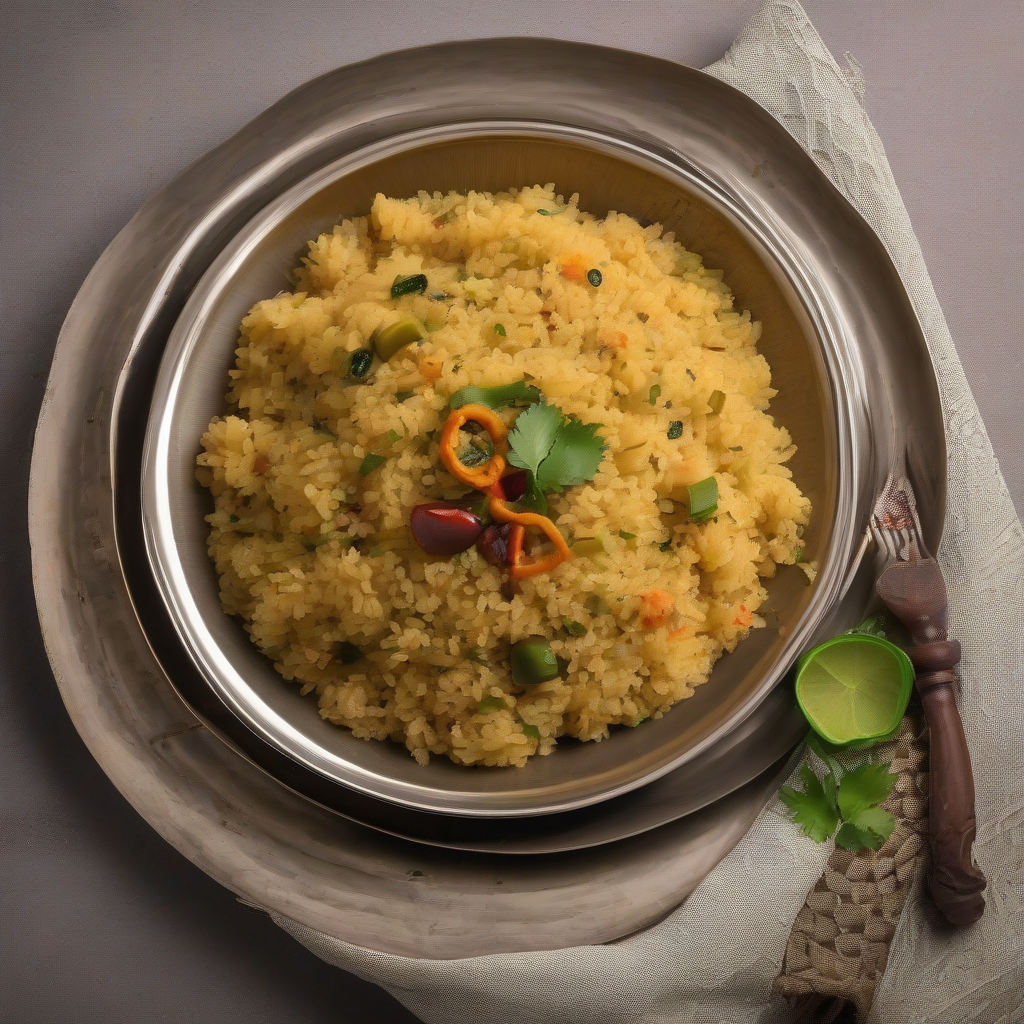Aval Upma: A Poha Powerhouse for Your Palate, Yaar!
Namaste Dosto! Kem cho? Kai Po Che! Chef Curry Do’pyaza here, back in your kitchens and hearts with a dish that’s as comforting as a warm hug on a chilly monsoon evening: Aval Upma!
This isn’t just any breakfast dish; it’s a vibrant, flavourful, and incredibly versatile staple found in many Indian homes, especially in Maharashtra, Gujarat, and South India. Think of it as sunshine on a plate, ready to kickstart your day with a burst of energy.
Occasions and Traditions:
Aval Upma, also known as Poha, isn’t just for breakfast. It’s a star during festivals like Diwali, Ganesh Chaturthi, and Janmashtami. It’s often prepared as a quick and easy snack for unexpected guests or a light meal during fasting periods. Its simplicity and satisfying nature make it a go-to dish for any time of the year!
A Glimpse into History:
Poha has a rich history, dating back centuries. Made from flattened rice, it was a practical way to preserve rice and make it easily transportable. Over time, different regions added their unique touches, resulting in the diverse and delicious variations we see today. The dish is an integral part of Indian culinary heritage.
Let’s Get Cooking!
Preparation Time: 10 minutes
Cooking Time: 15 minutes
Ingredients – The Spice Rack Symphony:
- 2 cups Patla Poha (Thin Flattened Rice)
- 1 medium Pyaaz (Onion), finely chopped
- 1 Hari Mirch (Green Chili), finely chopped (adjust to your spice preference)
- 1 inch Adrak (Ginger), grated
- 1/2 teaspoon Rai (Mustard Seeds)
- 1/2 teaspoon Jeera (Cumin Seeds)
- 1/4 teaspoon Haldi (Turmeric Powder)
- A pinch of Hing (Asafoetida)
- 8-10 Kari Patta (Curry Leaves)
- 1 tablespoon Nimbu ka Ras (Lemon Juice)
- 2 tablespoons Tel (Cooking Oil)
- Namak (Salt) to taste
- Hara Dhaniya (Fresh Coriander Leaves), chopped, for garnish
- Optional: Moongphali (Peanuts), roasted
Step-by-Step Cooking Instructions – The Culinary Chaal:
- The Poha Prep: Gently rinse the poha in a colander under running water for just a few seconds. Do not soak it for too long, or it will become mushy. The poha should be soft but still hold its shape. Set aside.
- The Tadka Tango: Heat the tel in a kadai or pan over medium heat. Add the rai. Once they start to splutter, add the jeera and hing.
- Aromatic Adventure: Add the kari patta, chopped pyaaz, and hari mirch. Sauté until the pyaaz turns a light golden brown.
- Spice Symphony: Add the grated adrak and haldi. Sauté for another minute until fragrant.
- Poha Power: Add the rinsed poha to the pan. Mix well, ensuring all the poha is coated with the spices.
- Seasoning Secrets: Add namak to taste. Mix well.
- Citrus Zing: Squeeze the nimbu ka ras over the poha. Mix gently.
- Garnish Glory: Garnish with fresh hara dhaniya and roasted moongphali (if using).
- Serve with Love: Serve hot and enjoy this delightful dish!
Tips for Best Results – The Culinary Cricket Guide:
- Poha Perfection: Use thin poha for the best texture. Thick poha can become too chewy.
- Water Wisdom: Be careful not to over-soak the poha. It should be just moistened, not soggy.
- Spice It Up: Adjust the amount of hari mirch to your liking. You can also add a pinch of red chili powder for extra heat.
- Nutty Delight: Roasting the moongphali adds a lovely crunch and nutty flavour.
Cooking Mediums – Your Kitchen, Your Choice:
- Gas Stove: The traditional and most common method.
- Induction Stove: Works perfectly well, offering precise temperature control.
- Pressure Cooker: Not recommended for this recipe, as the poha can become mushy.
- Oven: Not suitable for Aval Upma.
- Microwave: You can reheat leftover Aval Upma in the microwave for a quick and easy meal.
- Air Fryer: Not suitable for this recipe.
- Slow Cooker/Crockpot: Not recommended for this recipe.
Nutritional Information – The Goodness Within:
Aval Upma is a good source of carbohydrates and iron. It’s also relatively low in fat and calories, making it a healthy and satisfying meal. It contains essential nutrients that contribute to your overall well-being.
Serving Suggestions – The Culinary Canvas:
- Serve hot as a breakfast dish or snack.
- Pair it with a cup of hot chai or coffee.
- Enjoy it with a side of dahi (yogurt) or achar (pickle).
- Garnish with grated coconut for a touch of sweetness.
A Humble Request – The Culinary Connection:
Go ahead, give this recipe a try! I’m confident you’ll fall in love with its simple yet satisfying flavours. Prepare this flavorful dish and share it with your friends and family. Let them enjoy the taste of this wonderful dish.
Happy cooking, and remember, food is love!
